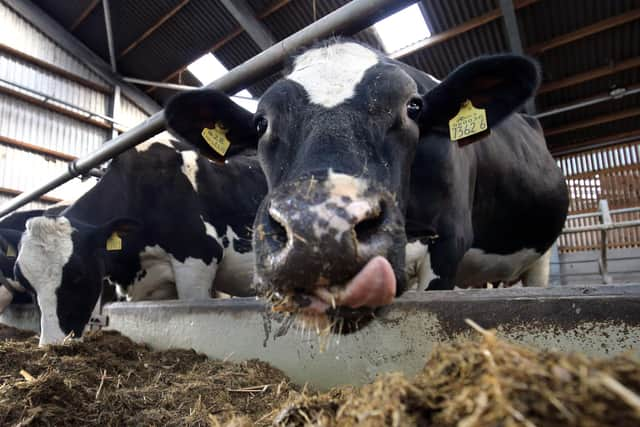A pint of milk – Why has the price risen so quickly and will it be maintained?
and live on Freeview channel 276
In the UK from 2008 until recently, the average price of a pint had been static at 42p, yet over the last 12 months it jumped by 40 percent to 59p. That might still sound like a small change, but for a staple that the average person drinks three pints of a week, it’s pretty staggering.
Prices for liquid milk have surged once again and the soaring price of a pint of milk may tell us about the nature of inflation facing our economy.
Advertisement
Advertisement
Liquid milk has traditionally proved stubbornly resistant to inflation and the fact that we are seeing such a rapid increase in prices in what is such a competitive market, highlights how embedded price rises have become.


The price rise originates in the supply-side shortages that emerged during the pandemic and the war in Ukraine has exacerbated inflation. AHDB data has shown feed and fertiliser costs are up 83 percent and 179 percent respectively over the past year. Dairy processors then have to pay more to secure supplies, plus dry weather in the spring saw an non-existent “spring flush” weighing upon output. The visibility of Russia’s invasion assisted processors in passing increased costs to retailers. It illustrated just how strong and relentless the increase in input prices has been.
Shoppers tend to notice food price inflation in two ways.
Firstly, when the cost of a regularly purchased staple rises. They will notice when the price of milk goes up and hence press interest last week. However, they will not be able to tell whether more occasionally purchased items rise in price.
Secondly, when the price of an average food basket increases. Supermarkets are trying to stay one step ahead of discounters and need to ensure that the price of their baskets is competitive, and they do this by only raising costs of products bought occasionally.
Advertisement
Advertisement
What we have is a very visible rise in inflation and this cannot be underplayed. This matters not only for shoppers, but also to the Chancellor of the Exchequer, the Bank of England and HM Treasury, because this is a sign as to how sticky inflation is likely to be. It’s likely to not only influence the expectations of shoppers and businesses about where prices will be this time next year, making increases in the cost of other products all the more credible, and further legitimise the case for maintaining farmgate milk prices.
The UFU have calculated that electricity prices for the average Northern Ireland dairy farm have increased from £40 to £180 per cow. The utility regulator forecasts that wholesale gas prices for next winter will be £3.07/therm, meaning we are unlikely to see a significant fall in energy prices. Rising input prices is leading to farmers culling cows at an increased rate. Last week for example saw a significant rise in slaughter numbers, partly buoyed by improved market prices but also by the necessity to pay increasing bills.
Retail analysts are predicting that liquid milk prices will not fall anytime soon, but there is a potential tipping point; before long, farmgate milk prices may not be high enough to compensate for surging input costs. Falling global dairy commodities prices means this is on the minds of many dairy farmers.
In order to ensure that we avoid reaching this tipping point, a strong farmgate milk price is crucial, not only to pay the bills at farm level, but to ensure there is enough white stuff to put on the cornflakes in the morning.